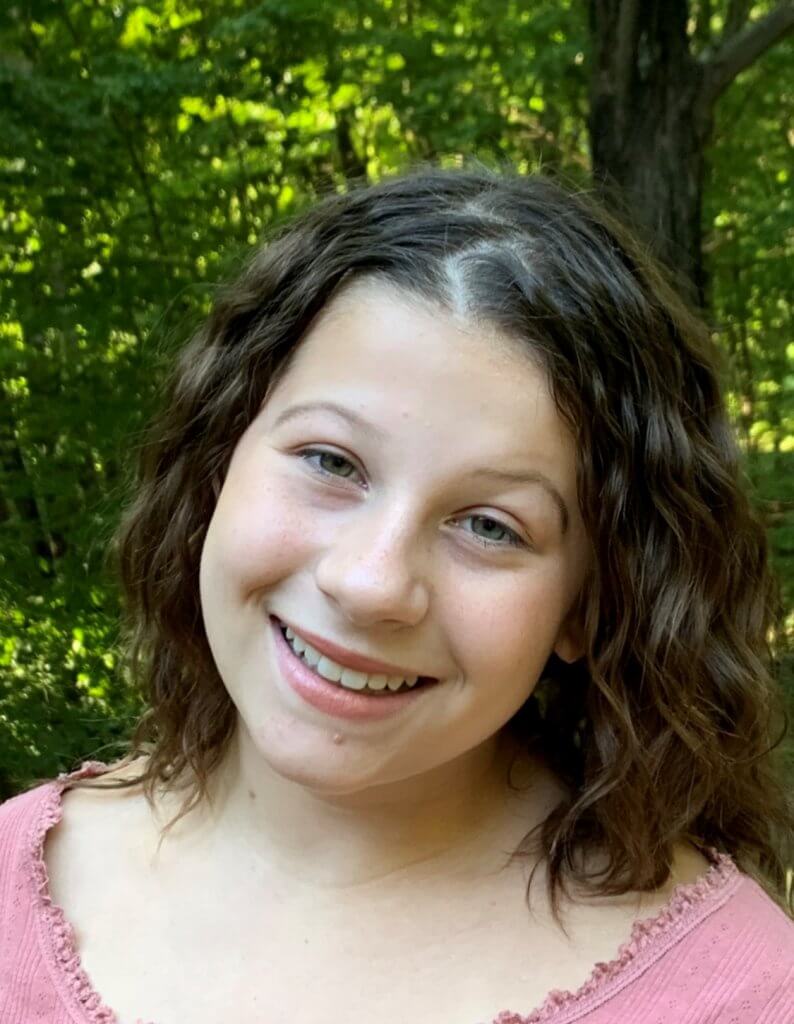At 4:00 a.m. on a mid-March morning, while most of the country was hunkering down due to the COVID-19 pandemic, Jennifer Huber began the long drive from her home in the Hudson Valley Region of New York to Boston. With her was her 14-year-old daughter, Emma Levine, who was suffering from excruciating headaches caused by tumors growing in her brain.
Their destination was Dana-Farber/Boston Children’s Cancer and Blood Disorders Center, and a new treatment they hoped would stabilize the rare spindle cell sarcoma causing Emma’s discomfort. Twice before, targeted therapies at Dana-Farber/Boston Children’s — also known as precision medicine — had proven to be what Huber called “miracle drugs” by slowing down tumors that in four years had traveled from Emma’s right kidney to her lungs and now her brain.
Their family needed one more miracle, and they got it. Within hours Emma had started the new treatment and began feeling better. Like the previous two targeted therapies, this most recent investigational drug is an oral medication that carries few of the side-effects of traditional chemotherapy.

After a week of monitoring at Dana-Farber/Boston Children’s, mother and daughter returned to New York and Emma’s freshman year of high school. She’s now a sophomore who celebrated her 15th birthday in September and is feeling great.
“Three times in two years, Emma’s team at Dana-Farber/Boston Children’s, in consultation with our doctors at home, have saved Emma’s life,” says Huber. “She would not be here without targeted therapies.”
Setbacks and sequencing
Emma’s cancer odyssey began in the summer of 2016. She began losing her appetite, weight, and happy-go-lucky attitude, and an ultrasound revealed the reason: a 10-centimeter tumor on her right kidney.
After a full-right nephrectomy to remove the tumor, doctors diagnosed Emma with a rare, undifferentiated renal soft-tissue sarcoma. On what should have been her first day at middle-school, she began an intensive chemotherapy and radiation regimen in New York.
The treatment worked, and after a clear scan in August 2017, Emma started seventh grade in person. Her next scan in November, however, revealed a major setback — her tumor had spread (or metastasized) from her kidney tumor bed to numerous spots in both her lungs. She started chemotherapy again; for the second time in a year, she lost her hair and dealt with other difficult side effects.
Then another option presented itself. Emma’s New York doctors learned that Katherine Janeway, MD, MMSc, and colleagues Alanna Church, MD, and Eliezer Van Allen, MD, at Dana-Farber/Boston Children’s were conducting clinical genomic sequencing of pediatric tumors in an effort to create more targeted therapy options for young patients. Changes, or mutations, in tumor tissue often provide clues into the current and future behavior of an individual’s specific cancer subtype. By studying these mutations, physicians can design more calculated treatment plans that have the greatest chance of success.
A tumor sample of Emma’s was sent to Janeway for analysis, and based on the results, a clinical trial at Dana-Farber/Boston Children’s was found for her.
“By using gene sequencing to look more deeply into Emma’s tumor sample we identified the abnormality, called an NTRK fusion, that was driving the cancer to grow and spread,” explains Janeway, director of Clinical Genomics at Dana-Farber. “This precision oncology approach enabled us to select a clinical trial of a drug that was more effective with fewer side effects.”

Future goals
In recent years, Dana-Farber/Boston Children’s has sequenced and analyzed more than 1,000 pediatric tumors, leading to more targeted treatment options for young patients. Each time Emma’s tumors have stopped responding to one, she has been able to switch to another that she can take orally at home. Her New York doctors stay in touch with her Dana-Farber/Boston Children’s team, which in addition to Janeway includes Director of Experimental Therapeutics Steven DuBois, MD, MS, and oncologist David Shulman, MD.
This arrangement allows Emma to spend more time at home with her dogs, parents, and baby brother. And while she is grateful for the opportunity to be “just a normal kid who gets a lot of check-ups,” she plans to pursue a career helping others handle their abnormal health challenges.
“I became inspired to be a child life specialist because of the close bond I’ve had with the child life teams at both my hospitals,” says Emma. “I love working with kids, and during my illness the fun, counseling, and therapy I’ve had from child life is what really helped me get through it the most. I want to use my first-hand experiences with cancer to help and relate to other kids in the same way.”

With the constant commitment of all of these amazing Doctors Emma is proof to never give up her drive and energy is what impresses me. This young woman has achieved so much in life because of science and the gift God has given her to survive such odds and always preserve. Her family is amazing. My wish is that each day is the miracle she deserves.